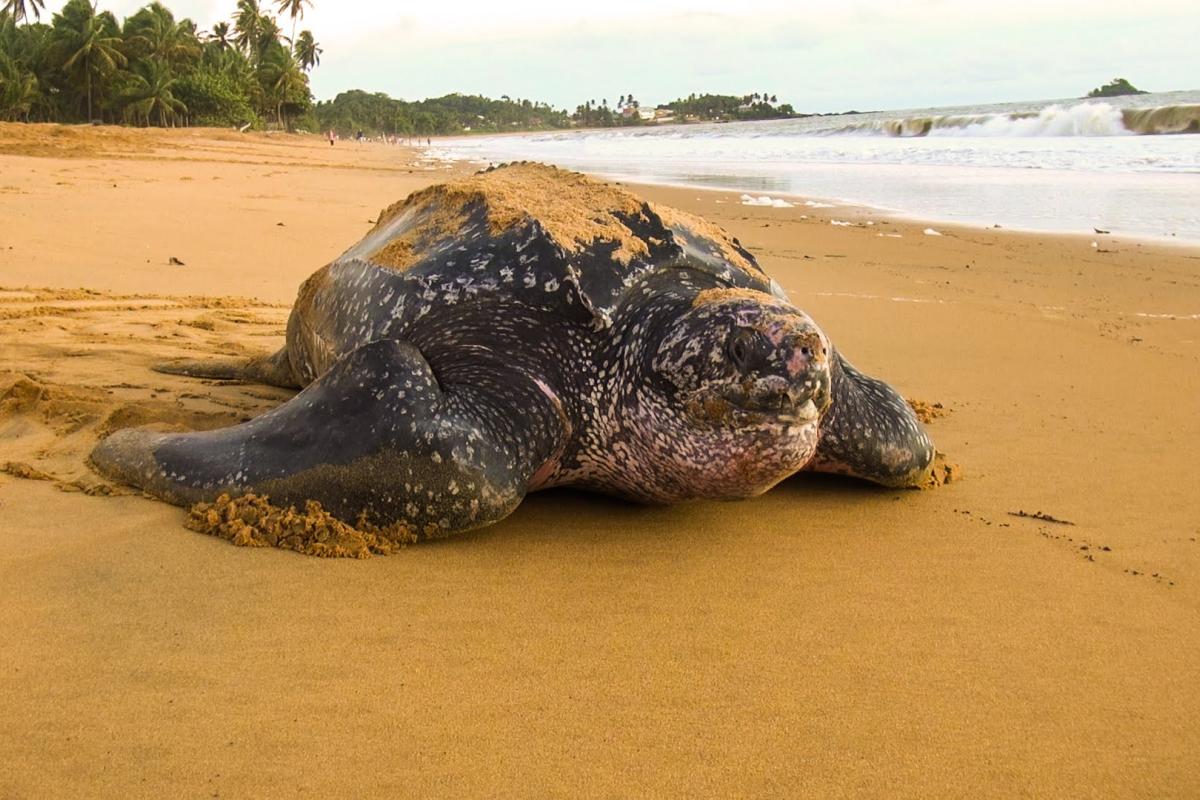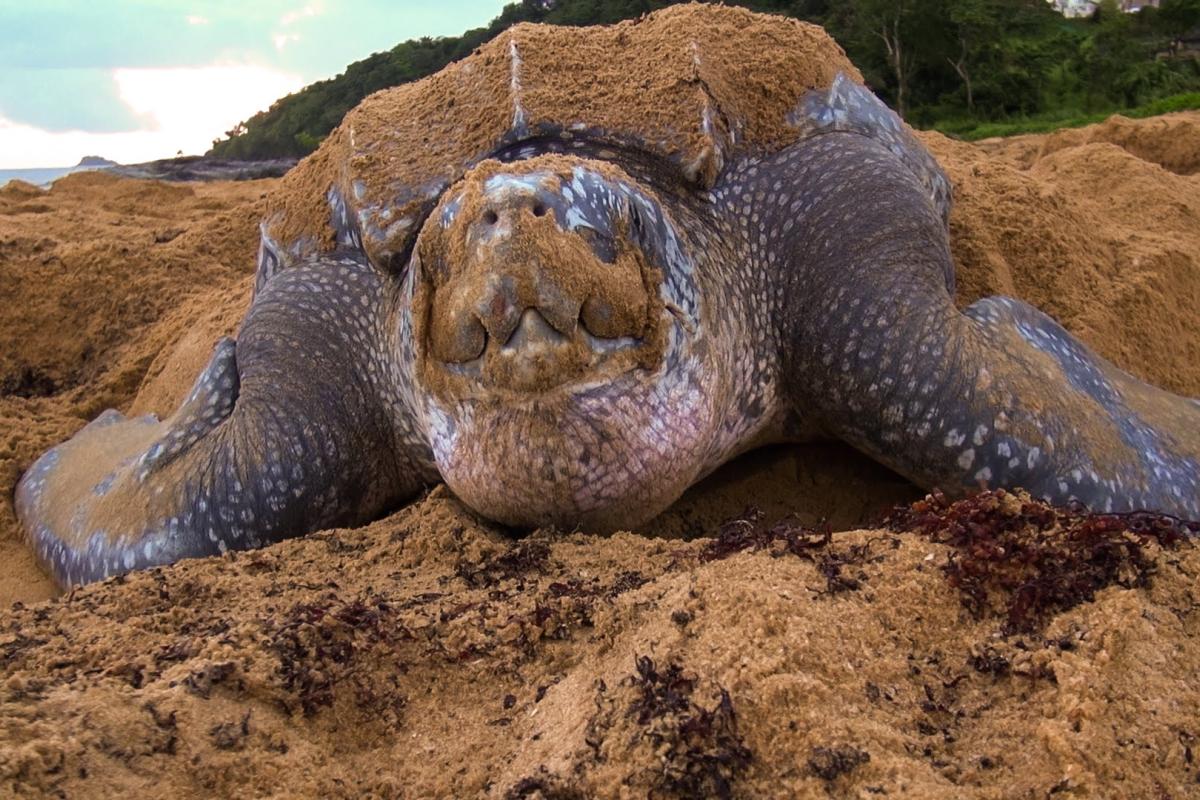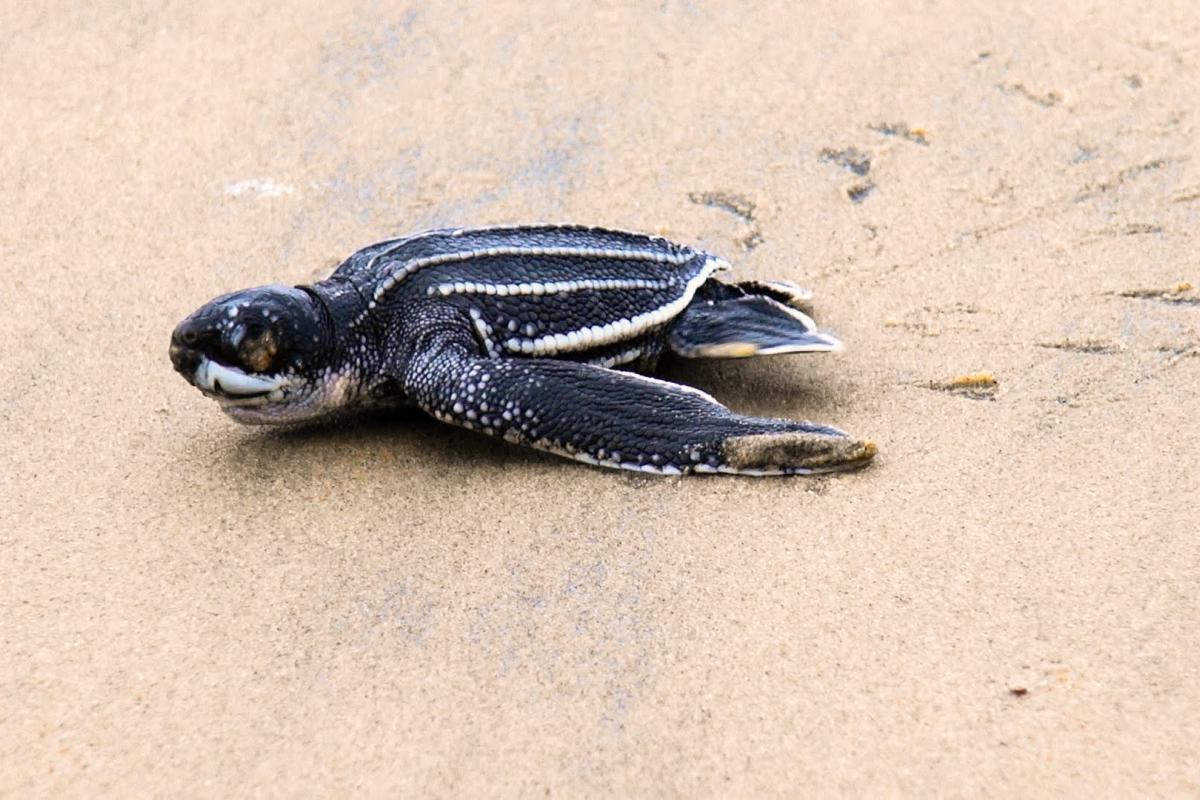
Leatherback turtle
Honu Pa’atore (S)
Geographic range: They are pelagic animals and are distributed around the globe in temperate waters and can live very close to the polar circles. They travel great distances between nesting beaches and feeding areas. The largest colony is in Africa, in French Guinée.
Habitat: They live in many different oceans (tropical, temperate, even sub arctic) but are seen in coastal waters when searching for food. They can dive at 1300 m max. They go on land only to lay eggs.
Physical description: They are the largest living turtles. They may reach a length of ca. 213 cm and and from tip flipper to tip flipper of ca. 270m and weight up to 900 kg. They don’t present any visible shell. Their blue black skin gives them their name ( leatherback turtle). On its back, 7 ridges are observable and 5 on the underside. The hatchlings look mostly black and the edges of their flippers are white. As they feed in colder seas than an average turtle can tolerate, they have a network of blood vessels that help them to maintain their body temperature higher than their surroundings.
Development: The leatherback turtles are the fastest growing reptile in the world, reaching adult size in 7-13 years. The sex of the hatchling is determined by temperature (male)>28.75°C>(male/female)>29.5°C>(female)
Reproduction: Male and females go back to their birth site and mate offshore. Then only the female swims ashore at night to lay 50 to 120 eggs (not all of them are fertilized) then it covers with the sand in order to moderate the Temperature and the humidity. Behavior : They are mostly solitary. They migrate long distances between their nesting and feeding areas.
Food habits: They are carnivorous and their main prey are gelatinous invertebrates
Fontanes, F.; A. Roszko; S. Flore; K. Hatton; V. Combos and A. Helton 2007. "Dermochelys coriacea"
Animal Diversity Web. Accessed November 10, 2017 at http://animaldiversity.org/accounts/Dermochelys_coriacea/



